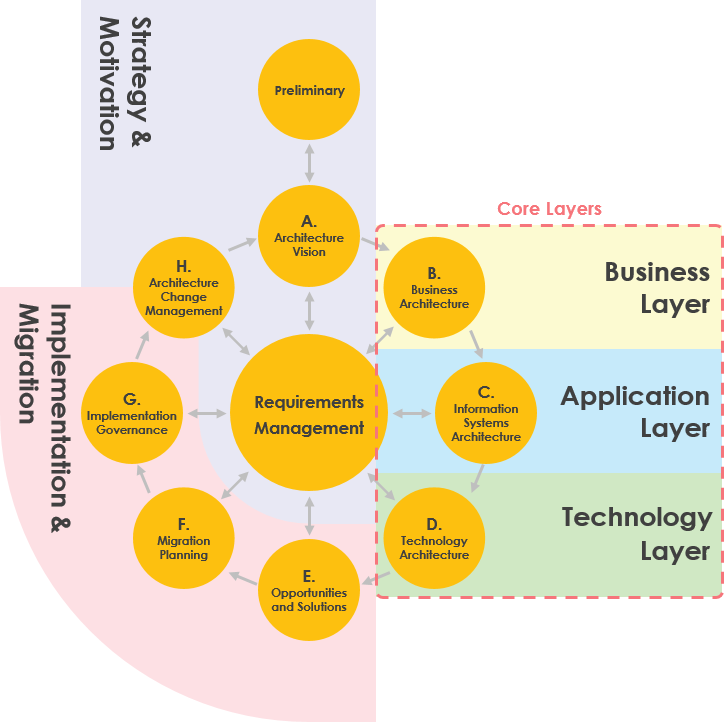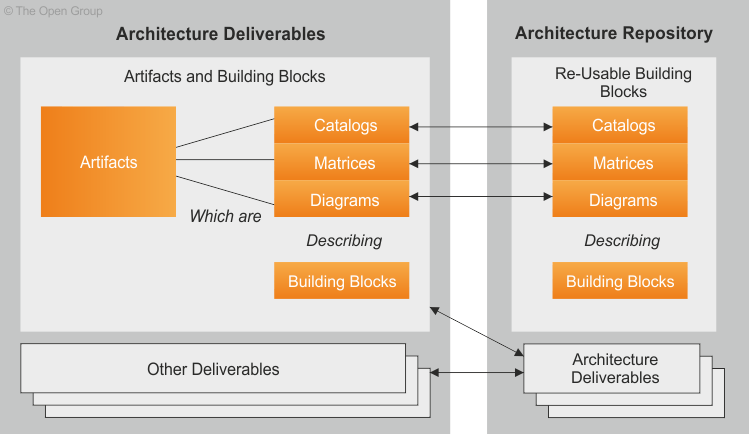Enhancing TOGAF ADM with ArchiMate: An Agile Visual Modeling Approach (PART 1)
The Support of ArchiMate for TOGAF ADM
ArchiMate fully supports TOGAF ADM (The Open Group Architecture Framework Architecture Development Method). ArchiMate is an enterprise architecture modeling language that is designed to support the description, analysis, and visualization of enterprise architectures. TOGAF ADM is a step-by-step approach to creating an enterprise architecture that is based on the principles of the TOGAF framework.
ArchiMate provides a graphical language for modeling the components of an enterprise architecture, such as business processes, information flows, application systems, and technology infrastructure. These models can be used to support the development of a TOGAF ADM-based architecture by providing a clear and consistent representation of the architecture components and their relationships.
The ArchiMate language also supports the development of TOGAF ADM artifacts, such as the Architecture Vision, Business Architecture, Information Architecture, and Technology Architecture. These artifacts are key components of the TOGAF ADM approach and are used to guide the development of the enterprise architecture.
Overall, ArchiMate provides a comprehensive modeling language that fully supports the TOGAF ADM approach to enterprise architecture development. It enables architects to create clear and consistent models of enterprise architecture components and their relationships, and to develop the TOGAF ADM artifacts that are essential for guiding the enterprise architecture development process.
Seamless Integration: How ArchiMate Enhances the TOGAF ADM Approach to Enterprise Architecture Development
The ArchiMate modeling language can be seamlessly integrated with the TOGAF ADM approach to enterprise architecture development by mapping the ArchiMate concepts and elements to the phases and deliverables of the ADM.
For example, in the ArchiMate Business layer, the organization structure and services it produces can be mapped to the Business Architecture phase (Phase B) of the ADM, which focuses on developing a baseline and target business architecture. The ArchiMate Application layer, which describes application components and their interactions, can be mapped to the Application Architecture phase (Phase C) of the ADM, which focuses on developing a baseline and target application architecture. Similarly, the ArchiMate Technology layer, which models hardware and software systems and the connecting networks, can be mapped to the Technology Architecture phase (Phase D) of the ADM, which focuses on developing a baseline and target technology architecture.
The ArchiMate Strategy and Motivation extension can be used to model the motivations and drivers for the enterprise architecture development, which is a key focus of the Preliminary phase and Phase A of the ADM. The ArchiMate Implementation and Migration extension can be used to model the implementation and migration planning for the architecture development, which is the focus of Phases E, F, and G of the ADM.
By using ArchiMate to model the various components of the enterprise architecture and integrating it with the TOGAF ADM approach, stakeholders can gain a comprehensive and consistent view of the enterprise architecture development process. This can help to ensure that the resulting architecture is aligned with the business goals and objectives, and can support the organization’s strategic vision.

Types of Outputs Produced by TOGAF ADM
the TOGAF ADM (Architecture Development Method) produces various outputs, which are categorized into three types:
- deliverables,
- artifacts, and
- building blocks.
Deliverables are formally reviewed and signed off by stakeholders and represent the output of projects.
Artifacts are work products that describe an aspect of the architecture and can be categorized as catalogs, matrices, or diagrams.
Building blocks are reusable components of enterprise capability that can be combined with other building blocks to deliver architectures and solutions. Architecture Building Blocks (ABBs) describe required capability and shape the specification of Solution Building Blocks (SBBs), which represent components that will be used to implement the required capability.

The provided diagram illustrates the Architectural Artifacts categorized according to the respective phases of TOGAF ADM. The artifacts recommended for production during each phase of the ADM are also indicated in the Figure below:

Mapping TOGAF ADM Seamlessly with ArchiMate
The provided Figure presents a classification of Architectural Artifacts according to the phases of TOGAF ADM, and indicates which artifacts should be produced in each phase. However, it is possible to replace many of these artifacts with ArchiMate viewpoints, which offer a more modern and comprehensive way of visualizing the ADM using fewer non-standard diagrams. Despite the lack of a formal guide for mapping the older diagrams to ArchiMate, Visual Paradigm will provide a series of study guides to demonstrate how ArchiMate modeling can be used to represent the entire ADM in a more intuitive and efficient manner.
By following the step-by-step mapping guide series for each artifact, you can easily kick-start your TOGAF implementation and communicate more effectively with stakeholders. With ArchiMate viewpoints replacing many of the older diagrams, you can create clearer and more unambiguous representations of the ADM phases. These guides will help you navigate the transition to ArchiMate modeling and enable you to produce comprehensive and intuitive visualizations of your enterprise architecture.
About This Study Guide: TOGAF ADM Visual Modeling with ArchiMate
In this Study Guide Series, we will start by introducing the first artifacts of the first development phase in TOGAF ADM, and proceed through each subsequent phase and artifact. For example, in the Figure above, the first development phase of ADM is Preliminary, and the first (and only) artifact is a Catalog – Principles Catalog. The next phase will be Architecture Vision, and the first artifact will be Metrices – The Stakeholder Map Matrix. By following this structured approach, you can gain a comprehensive understanding of how ArchiMate supports each phase of the ADM and how to use it effectively in your enterprise architecture.

